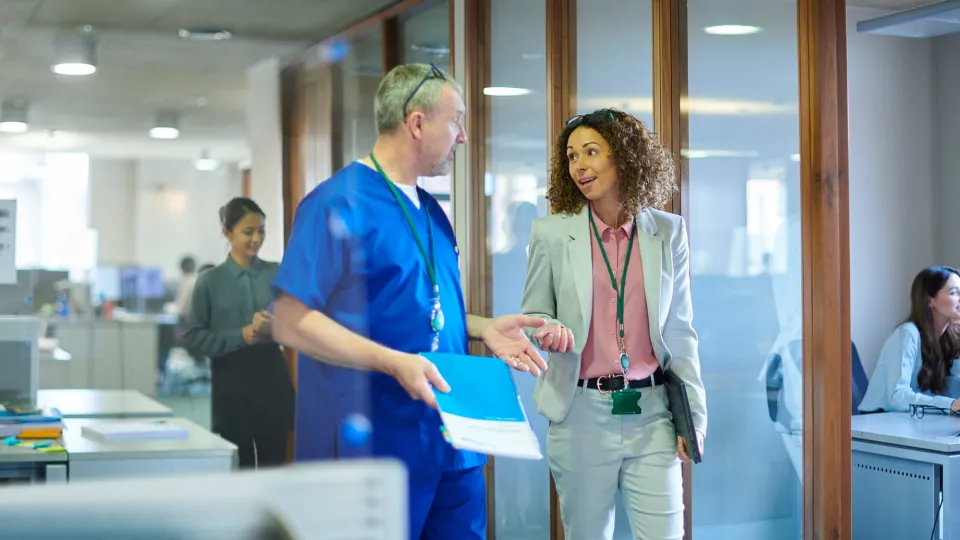Best Practices in Medical Administration for Improving Effectiveness and Decreasing Costs
In the ever-evolving landscape of medical care, the search of ideal techniques in clinical management is extremely important for enhancing efficiency and curbing expenses. By integrating innovative innovations such as electronic health records and telemedicine, healthcare providers can streamline operations and enhance client treatment.
Leveraging Advanced Innovation
In today's quickly advancing medical care landscape, leveraging advanced modern technology is no longer optional but vital for effective clinical management. The assimilation of digital remedies into medical care systems has transformed the method centers operate, streamlining processes and boosting patient treatment. Electronic Health And Wellness Records (EHRs) are critical, giving detailed client data that can be accessed instantaneously by authorized workers, thus decreasing redundancy and reducing errors. By streamlining individual information, EHRs eliminate the demand for difficult documents and promote smooth communication among medical care suppliers.
Telemedicine is one more technical improvement that has actually transformed client communication. It uses comfort for both clients and health care professionals by enabling remote appointments, which can reduce the demand for in-person brows through and optimize appointment organizing. Additionally, telehealth systems can extend healthcare accessibility to rural or underserved areas, linking voids in care shipment.
In addition, using Artificial Knowledge (AI) and artificial intelligence is becoming progressively common in predictive analytics, permitting early discovery of potential health and wellness problems and even more informed decision-making. These technologies, when integrated successfully, can boost analysis precision and personalize client treatment plans, eventually causing boosted healthcare outcomes and operational efficiency.
Optimizing Resource Allowance
By tactically managing resources such as workers, tools, and funds, medical care facilities can significantly boost their functional performance, boost person end results, and lower unneeded expenses. The first step in optimizing resource allowance involves performing a detailed analysis of present assets and determining locations where sources might be underutilized or exhausted.
Prioritizing resource allocation based on patient requirements and service needs is necessary. Implementing flexible staffing designs can also maximize labor sources by readjusting employees allotment in response to fluctuating patient volumes.
Funds should be meticulously monitored and assigned with tactical foresight to sustain both temporary functional demands and long-lasting institutional objectives. This includes investing in training programs that enhance personnel expertises and adopting energy-efficient techniques that decrease functional costs (medical administration). Eventually, a maximized resource appropriation technique promotes a sustainable healthcare environment that is responsive, reliable, and monetarily prudent
Streamlining Operations Processes
When health care facilities purpose to enhance operational efficiency, simplifying process procedures comes to be an essential emphasis. Efficient operations lessen redundancy, get rid of unnecessary actions, and boost control amongst health care experts. This approach not only speeds up service distribution but additionally improves the high quality of patient care.

Following, innovation integration plays a significant role in enhancing operations. Implementing electronic health and wellness documents (EHRs) and digital medical professional order entry (CPOE) systems lowers documents, minimizes human mistake, and makes certain details comes to all relevant employees. In addition, leveraging telemedicine systems can improve person assessments and follow-ups, decreasing the pressure on physical framework.

Ultimately, streamlined workflows result in set you back reductions and improved person complete satisfaction, promoting a much more sustainable healthcare atmosphere.
Enhancing Information Administration
Building upon streamlined workflows, enhancing information monitoring ends up being an essential component beforehand health care management. Reliable data monitoring systems are critical for preserving precise patient records, enhancing decision-making, and making sure compliance with governing criteria. By applying durable data management remedies, healthcare centers can enhance the high quality of patient care while concurrently decreasing functional expenses.
One key facet of improving data monitoring is the assimilation of innovative digital health and wellness record (EHR) systems. These systems assist in the seamless exchange of person information across different divisions, decreasing replication of tests and decreasing mistakes. A properly designed EHR system supports data analytics, enabling medical care companies to identify trends and make notified choices concerning client care.
Additionally, safeguarding client data is vital. Adopting thorough cybersecurity actions, including security and normal audits, ensures the honesty and privacy of sensitive details. This not only protects individuals yet additionally keeps the organization's credibility.
Investing in personnel training is one more crucial variable. Educating medical care professionals their explanation on information management methods boosts their capacity to efficiently use innovation, resulting in improved client results. To conclude, enhancing information monitoring with innovative technology and comprehensive training is necessary for attaining performance and price decrease in clinical administration.
Fostering Collaborative Communication
A critical component in progressing medical administration is promoting collective communication among health care specialists. Reliable interaction is vital for making certain smooth individual treatment, enhancing therapy end results, and reducing errors. By encouraging open discussion and control throughout multidisciplinary groups, health care companies can boost their operational efficiency and lower unneeded prices.
Central to this technique is the integration of interaction technologies such as electronic health documents (EHRs) and safe and secure messaging systems, which facilitate the rapid exchange of critical client info. These tools allow doctor to accessibility and share information in actual time, guaranteeing that all employee Going Here are notified and aligned in their decision-making procedures. Normal group meetings and interdisciplinary rounds can additionally promote a culture of cooperation and responsibility.
Educating programs focused on improving interaction abilities are also vital. These programs can aid personnel develop the capability to communicate info clearly and pay attention proactively, thus minimizing misunderstandings and promoting a helpful workplace. In addition, taking on standard communication methods, such as SBAR (Circumstance, History, Evaluation, Suggestion), can streamline the exchange of info, making certain that vital details are conveyed succinctly and successfully. Eventually, cultivating collaborative interaction results in improved health care delivery and expense financial savings (medical administration).

Final Thought
Integrating sophisticated modern technology, such as electronic health records and telemedicine, together with maximized source allocation and structured workflow processes, is important for boosting efficiency in medical management. Effective data administration and cultivating joint interaction amongst healthcare teams are vital for reducing redundancies and improving care top quality. By focusing on preventative treatment and engaging in quality renovation efforts, health care companies can accomplish significant expense financial savings and improved patient end results, thereby ensuring sustainable medical care delivery in an increasingly complicated environment.